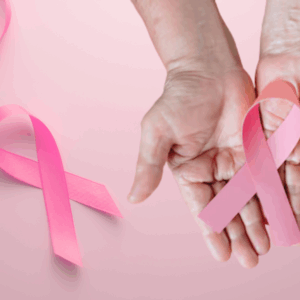“Injustice anywhere is a threat to justice everywhere.”
-Martin Luther King
INTRODUCTION & CONTEXT
According to the World Health Organisation (WHO), maternal health is defined as “Maternal health refers to the health of women during pregnancy, childbirth and the postnatal period.” The health of women during its crucial biological phases of life throughout the pregnancy stage, stage while giving birth to child and stage post-childbirth are three main periods where maternal health comes into the picture. A woman has equal rights in the decision-making process about her reproductive rights, right to access quality health care services, right to access medicines and right to life in maternal health (UNICEF,2020).
This essay aims to analyse the human rights violation in maternal health. Based on a report published by the WHO in the year 2017, there is a nominal reduction in the maternal mortality from 451000 recorded in the year 2000 to 295000 in the year 2017, a reduction by 38%, it’s still one of the biggest and difficult challenges for different health systems across the globe (WHO, 2017).
Improving maternal health is crucial as most of the mothers die due to lack of proper nutrition during antenatal, maternity, and postnatal phase, absence of skilled birth health professionals and experts at the time of childbirth and irregularity & no access to life-saving medicines at antenatal, maternity, and postnatal phases. This is a challenge, especially in the Global South nations. “Globally, over a half a million women die each year due to complications during pregnancy and childbirth, with 99% of these deaths occurring in the global south “(WHO, 2005).
In a report published by the FAO, up to 80 per cent of maternal mortalities are recorded due to hunger and malnutrition. The WHO’s Sustainable Development Goals (SDG) 5 envisages, “By 2030, reduce the global maternal mortality ratio to less than 70 per 100,000 live births, and ensure Universal Reproductive Health Care for All by 2030″ (FAO, 2010).
HUMAN RIGHTS FRAME
In article 12 of the International Covenant on Economic, Social and Cultural Rights specified Health as an inclusive fundamental human right for all; “Health is a fundamental human right indispensable for the exercise of other human rights. Every human being is entitled to the enjoyment of the highest attainable standard of health conducive to living a life in dignity” (UN, 2000).
The question now that arises is: Is Maternal mortality a result of a breach of human rights? Is the failure in reducing maternal mortality in SDG goal 5 is due to the violation of the fundamental principles that point towards lack of responsibility, Gender discrimination, absence of any accountability and non-participatory decision making? The sole presence of categorising SDG 5 on Maternal mortality and universal access to reproductive healthcare itself demonstrates the inherent association between Maternal mortality and human rights. It reflects how the states and international players are not held accountable for maternal mortality, reflecting that gender discrimination is still prevalent & deep-rooted within the society; making it a need to include in SDG goals and there is practically no mechanism & structure put in place to address the elephant in the room of maternal mortality. The decision-makers and key players in power demonstrate the non-participatory decision-making leading to authoritative decisions. Maternal Mortality is an inherent massive deep-rooted Human Rights Issue and a global health crisis.
The evidence of governmental systematic failures to improve & safeguard maternal health “violates various women’s fundamental human rights, including the rights to life, health, equality, information, education, enjoyment of the benefits of scientific progress, freedom from discrimination, freedom from cruel and inhuman treatment, and to decide the number and spacing of children”(Cabal, Luisa et al., 2009). All these are multifactorial and interrelated to each other hence understanding and decision making with all these factors are crucial to reduce maternal mortality & improve maternal health.
RIGHT TO HEALTH
The absence of decision making for women’s own health & body including reproductive & sexual health itself is the biggest indicator of violation of the Right to Health. The governments & health policies must take measures to ensure good maternal & reproductive health services for all including decisions related to family planning, prenatal care, maternal services, emergency obstetric care & postnatal health in every population. ” Lack of access to antenatal and postnatal care services is commonly associated with social isolation, a lack of recognition of the importance of gestational care, or lack of resources such as transport.”(Warshaw et al., 2001)
RIGHT TO EQUALITY
The issue also underpins a very important aspect of the state of women through discrimination and structural inequality that a woman faces every day in her life. The gap in female literacy, freedom of expression for women, discrimination, and power play within the systems at micro, mezzo, and macro level; all these integrate & lead to failure to achieve Right to Equality & Non – Discrimination. Rightly described this state by WHO, ” maternal mortality is an indicator of disparity and inequity between men and women and its extent a sign of women’s place in society and their access to social, health, and nutrition services and to economic opportunities” (WHO et al.,2005). The absence of opportunities & lack of freedom to attain social, economic & cultural rights equal to men leads to failure in obtaining access to better healthcare services and ensuring their reproductive rights. (UN, 2006)
RIGHT TO LIFE
As mentioned in Article 6 of the International Covenant on Civil & Political Rights, “every human being has the inherent right to life and shall not be arbitrarily deprived of his or her life. Protecting this right means that governments must not only prevent arbitrary killings but also adopt positive measures to ensure the right to life” (UNHRC, 1982), also including the measures & positive steps to reduce maternal deaths (UN, 2000) .This also is related to the context of women exercising reproductive rights by making quality healthcare resources available, affordable and accessible irrespective of any boundaries.
CONCLUSION
The discussion on the violation of Human rights in maternal health is just the tip of the iceberg but the solution to restore Human Rights to reduce maternal mortality should be through different approaches while framing policies and measures towards it. An article titled, ” Calling a Spade a Spade: Maternal Mortality as a Human Rights Violation ” by Luisa Cabal and Morgan Stoffregen, clearly states the three major challenges in restoring Human rights in maternal health are as follows.
i) Absence of setting maternal health as key agendas & priorities by the Political leaders
ii) Assumptions and perception regarding the complexities towards maternal Health
iii) Classification of maternal health as separate key health issue/development issue/agenda (Cabal, Luisa et al., 2009)
To address maternal health, it is imperative to increase the degree of visibility of maternal health, raise the accountability of different actors involved for an inclusive equal & good policy design, implementation and effectiveness, sensitization about issues on maternal health through advocacy at international & global platforms. As a Human rights community, we all should stand up & walk together to stop the millions of maternal deaths across the globe every year is a disgraceful heinous social injustice more than a tragedy.
“No woman can call herself free who does not own and control her body. No woman can call herself free until she can choose consciously whether she will or will not be a mother.”
-Margaret Sanger
REFERENCES
- UNICEF, Programme Maternal Health, 2020; available at https://www.unicef.org/india/what-we-do/maternal-health
- World Health Organization. (2019). Trends in maternal mortality 2000 to 2017: estimates by WHO, UNICEF, UNFPA, World Bank Group and the United Nations Population Division. World Health Organization. https://apps.who.int/iris/handle/10665/327595. License: CC BY-NC-SA 3.0 IGO
- World Health Organization (WHO) et al., Reduction of Maternal Mortality, 2005; available at http://www.who.int/ reproductive-health/publications/reduction_of_maternal_mortality/ e_rmm.pdf. 2 Id. at 13-14
- Food and Agricultural Organisation (FAO) And the Eight Millennium Development Goals, (2010), Goal 5: Improve Maternal Health, page 1; available at https://www.fao.org/3/az957e/az957e.pdf
- General Comment No. 14 on the highest attainable standard of health (2000), The Committee on Economic, Social and Cultural Rights; available at https://undocs.org/E/C.12/2000/4
- Cabal, Luisa, and Morgan Stoffregen, “Calling a Spade a Spade: Maternal Mortality as a Human Rights Violation.” Human Rights Brief 16, no. 2 (2009): 2-6; available at https://digitalcommons.wcl.american.edu/cgi/viewcontent.cgi?article=1040&context=hrbrief
- Warshaw, C. (2001). Women and violence. In N. L. Stotland & D. E. Stewart (Eds.), Psychological aspects of women’s health care: The interface between psychiatry and obstetrics and gynaecology (pp. 477–548). American Psychiatric Publishing, Inc., available at https://books.google.co.in/books?hl=en&lr=&id=AZAETqR-UpQC&oi=fnd&pg=PA477&ots=9TIggMWpXB&sig=vTckf-xM3ydQt1OYUcpaS0grGeA&redir_esc=y#v=onepage&q&f=false
- Report of the Special Rapporteur on the Right of Everyone to the Enjoyment of the Highest Attainable Standard of Physical and Mental Health, U.N. General Assembly, 61st Sess., page 14, U.N. Doc A/61/338 (2006); available at https://www.ohchr.org/Documents/HRBodies/SP/factsfigures2006.pdf
- UN Human Rights Committee (HRC), CCPR General Comment No. 6: Article 6 (Right to Life), 30 April 1982, available at: https://www.refworld.org/docid/45388400a.html
- UN Human Rights Committee (HRC), CCPR General Comment No. 28: Article 3 (The Equality of Rights Between Men and Women), 29 March 2000, CCPR/C/21/Rev.1/Add.10, available at: https://www.refworld.org/docid/45139c9b4.html
Dr Darshita Singh is a researcher at LSE health in the London School of Economics and Political Sciences, London. She has worked extensively in public health, digital health and equitable healthcare services in India, the USA, the UK and Canada in the past. She was also one of the speakers at the World Federation of Public Health Associations (WFPHA) to speak on digital health - opportunities & challenges.
-
Dr Darshita Singhhttps://eciph.in/author/dr-darshita-singh/





